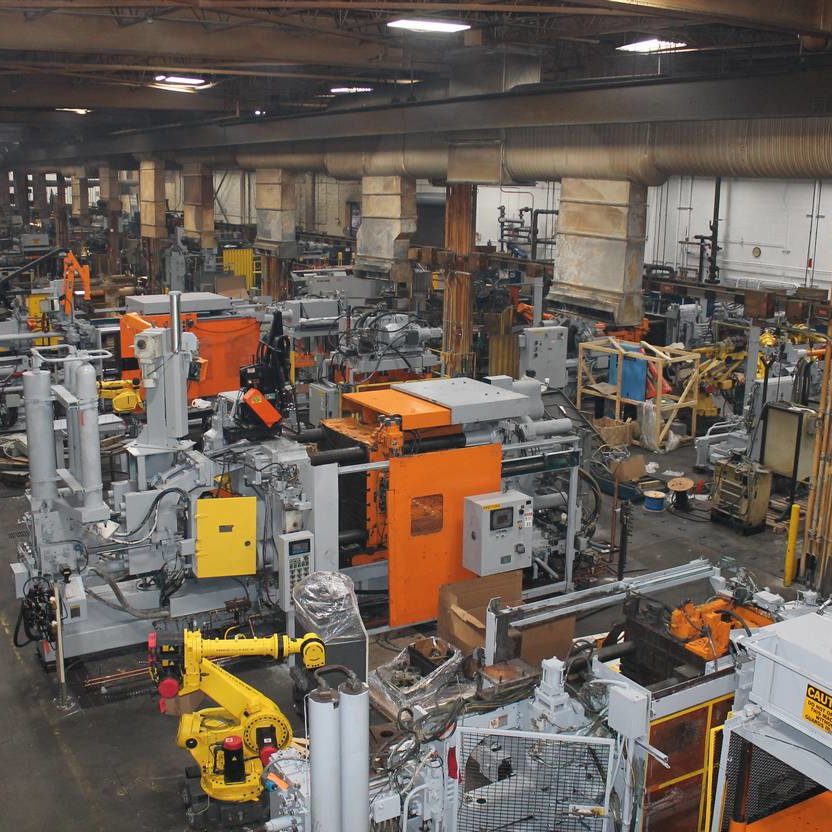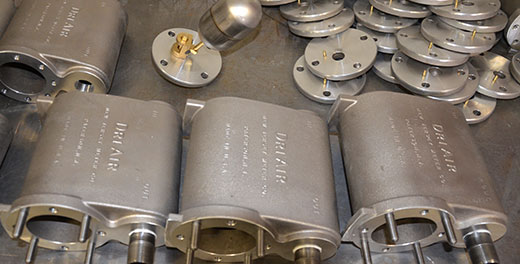Fascination About Aluminum Castings Company
Some Of Aluminum Castings Company
Table of ContentsThe Greatest Guide To Aluminum Castings CompanySome Known Incorrect Statements About Aluminum Castings Company 9 Easy Facts About Aluminum Castings Company Shown9 Easy Facts About Aluminum Castings Company DescribedThe Definitive Guide for Aluminum Castings CompanyExcitement About Aluminum Castings Company6 Easy Facts About Aluminum Castings Company ShownSome Known Facts About Aluminum Castings Company.
There are two key sorts of die casting used in the aluminum casting sector: hot chamber die spreading and cold chamber pass away casting. The key difference between these techniques is how the molten metal is delivered to the mold and mildew. In hot chamber pass away casting, frequently made use of for reduced melting point metals, the melting pot is directly linked to the equipment, and a plunger requires the product through a gooseneck right into the die cavity.
Unknown Facts About Aluminum Castings Company
In these methods, the mold and mildew is deliberately destroyed or damaged away in order to draw out the completed light weight aluminum casting. Typical processes under the group of expendable mold casting consist of (investment spreading),,, and financial investment casting. When manufacturing personalized aluminum parts utilizing expendable molds, manufacturers put liquified aluminum or aluminum alloys into the mold, which is after that damaged apart to launch the strengthened steel component.
The is just one of the earliest and most widely pre-owned forms of aluminum spreading. It involves condensing specialty foundry sand, often strengthened with clay or resin, around a specifically crafted recyclable pattern that determines the shape and inner information of the finished light weight aluminum item. The pattern system integrates risers and vents to take care of the circulation of molten metal and to stop casting issues such as shrinking porosity.
The Best Guide To Aluminum Castings Company

This mold and mildew is after that preheated prior to the pouring of molten light weight aluminum or aluminum alloy. As the metal loads the shell, it catches the elaborate details and fine surface area finish of the mold and mildew. As soon as cooled, the ceramic is mechanically or chemically broken away, enabling for the elimination and splitting up of private cast components.
Little Known Facts About Aluminum Castings Company.
Permanent mold and mildew casting utilizes reusable steel molds and is excellent for automation with constant quality and much less waste. Expendable mold spreading uses single-use mold and mildews, like sand or foam, supplying style flexibility and reduced tooling costs for prototypes or brief runs. Die casting is best for generating high quantities of light weight aluminum parts that call for tight tolerances, great details, and smooth surfaces.
The Toshiba Machine DC-J Collection consists of die casting equipments ideal for aluminum. Recognized for their robust construction and high shot performance, these makers make certain reliable and precise spreading (Aluminum Melting and Casting).

While aluminum can be used in its pure kind, it is often alloyed with various other steels to enhance its properties or the residential properties of the various other steels. Light weight aluminum alloys are classified into 8 series, numbered from one to 8.
Some Ideas on Aluminum Castings Company You Should Know
This alloying improves the strength and solidity of light weight aluminum however lowers its ductility and corrosion resistance. The 2000 collection alloys are challenging to weld but can be warm dealt with to enhance their properties. The 3000 collection alloys are largely alloyed with manganese. This mix improves deterioration resistance while providing moderate toughness.
Furthermore, it includes high ductility and a really smooth finished surface area. The 4000 series alloys are alloyed with silicon, which lowers the melting point and boosts fluidness. This makes it a prominent selection for casting, as it is simple to develop in its liquified state. The 4000 series is likewise typically made use of as a filler for welding and brazing applications.
Excitement About Aluminum Castings Company
This collection is categorized as a high-strength alloy, specifically suited for sheet and plate applications due to its exceptional weldability. Its resistance to deterioration from acids and antacid makes it excellent for use in extreme and aggressive settings (Aluminum Foundry). The 6000 series alloys are alloyed with both magnesium and silicon, supplying an equilibrium of toughness, mechanical residential properties, and rust resistance
Handling the 6000 series needs specialized and advanced tools, which can be complex and expensive. This series is known for its outstanding corrosion and oxidation resistance, as well as its convenience of covering, treatment, and workability. The 7000 useful link collection aluminum alloys are the greatest and most long lasting amongst light weight aluminum kinds, with stamina comparable to around two-thirds of industrial-grade A3 steel.
The Aluminum Castings Company PDFs
Zinc is the key alloying aspect in the 7000 series, improving the hardness of the aluminum, also though zinc's firmness is comparable to that of light weight aluminum on the Mohs range. The 8000 series aluminum alloys are mostly alloyed with tin, in addition to small amounts of copper and nickel (Aluminum Foundry). While these alloys provide reduced strength contrasted to various other series, they master machinability and put on resistance
Aluminum cast heatsinks are electrically conductive, permitting them to be grounded properly. They are typically cast with integrated features that lessen the requirement for additional procedures, such as added machining or assembly, leading to additional cost financial savings. Aluminum spreading is regularly utilized to manufacture brackets for both durable industrial devices and household home appliances.
A Biased View of Aluminum Castings Company
The single-piece building of aluminum braces improves their toughness and toughness, lowering the chance of failure. If openings are needed, they can be included directly in the casting mold and mildew, reducing the requirement for post-production ending up (https://gravatar.com/warma26d710fbf9). Manufacturers have increasingly embraced light weight aluminum casting for golf equipment because of its resilience, stability, and versatility in shaping